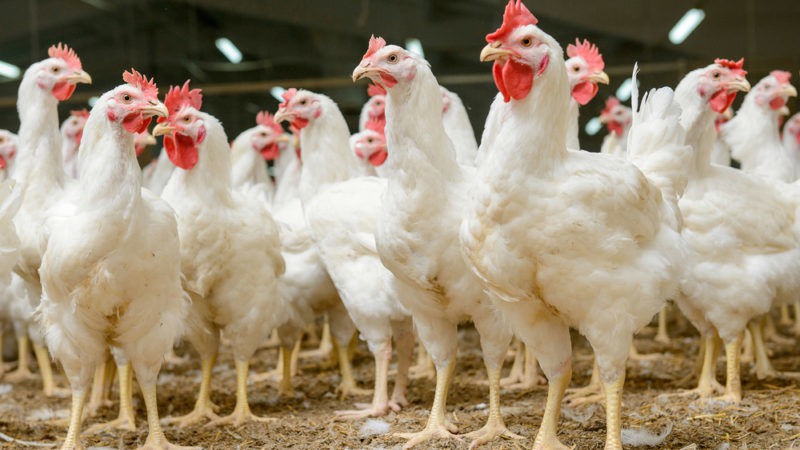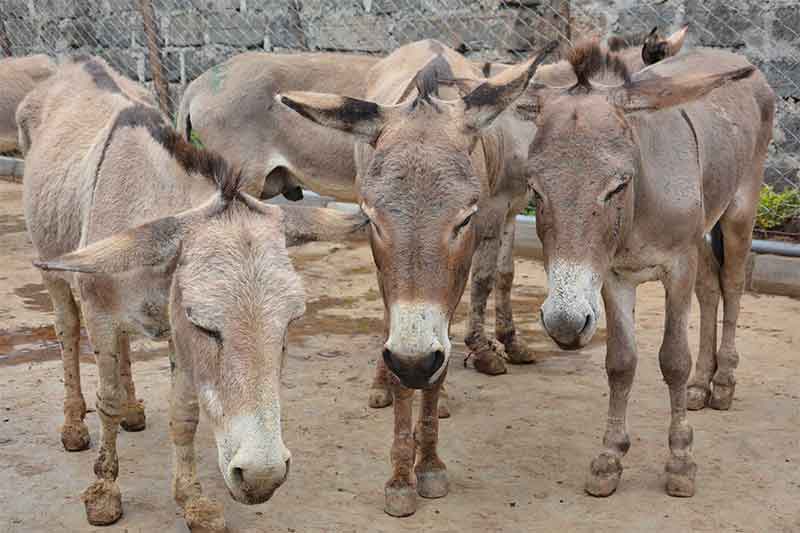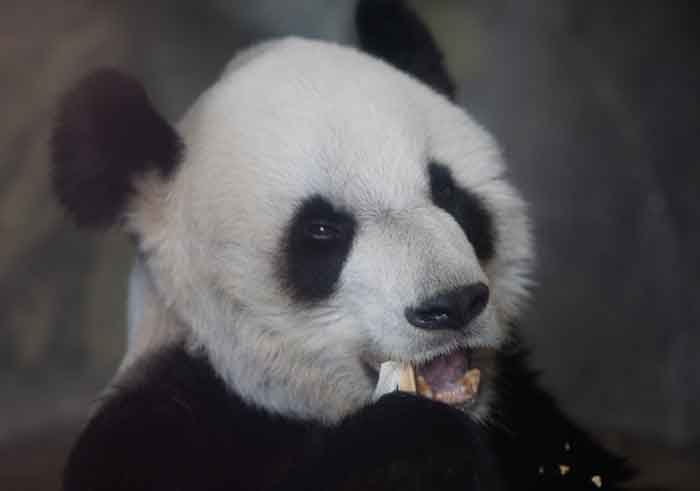“I hear the universal cock-crowing with surprise and pleasure, as if I never heard it before. What a tough fellow! How native to the earth!” —Henry David Thoreau
Chickens are indeed native to the earth. Despite centuries of domestication—from the tropical forest to the farmyard to the factory farm—the call of the wild has always been in the chicken’s heart. Far from being “chicken,” roosters and hens are legendary for their bravery. In classical times, the bearing of the rooster—the old British term for “cock,” a word that was considered too sexually charged for American usage—symbolized military valor: the rooster’s crest stood for the soldier’s helmet and his spurs stood for the sword. A chicken will stand up to an adult human being. Our tiny Bantam rooster, Bantu, would flash out of the bushes and repeatedly attack our legs, lest we should disturb his beloved hens. (Although we do not allow our chickens to hatch chicks, in 2018 a hen and a rooster rescued from a cockfighting operation produced a surprise family, the hen having camouflaged herself in a wooded area of our sanctuary.)
An annoyed hen will confront a pesky young rooster with her hackles raised and run him off. Although chickens will fight fiercely, and sometimes successfully, with foxes and other predators to protect their families, with humans, however, this kind of bravery usually does not win. A woman employed on a chicken “breeder” farm in Maryland, berated the defenders of chickens for trying to make her lose her job, and threatening her ability to support herself and her daughter. For her, the “breeder” hens were “mean” birds who “peck your arm when you are trying to collect the eggs.” In her defense for her life and her daughter’s life, she failed to see the similarity between her motherly protection of her child and the exploited hen’s courageous effort to protect her own offspring.
In an outdoor chicken flock, similar to the 12,000 square feet, predator-proof sanctuary my organization United Poultry Concerns has in rural Virginia, ritual and playful sparring and chasing normally suffice to maintain peace and resolve disputes among chickens without bloodshed. Even hens will occasionally have a spat, growling and jumping at each other with their hackles raised; but in more than 30 years of keeping chickens, I have never seen a hen fight turn seriously violent or last for more than a few minutes. Chickens have a natural instinct for social equilibrium and learn quickly from each other. An exasperated bird will either move away from the offender or aim a peck, or a pecking gesture, which sends the message: “Back off.”
Bloody battles, which usually take place when a new rooster is introduced into an established flock, are rare, short-lived and usually affect the comb—the crest on top of a chicken’s head—which, being packed with blood vessels, can make an injury look worse than it usually is. It is when chickens are crowded, confined, frustrated or forced to compete at a feeder that distempered behavior can erupt. By contrast, chickens allowed to grow up in successive generations, unconfined in buildings, do not evince a rigid “pecking order.” Parents oversee their young, and the young contend playfully, and indulge in many other activities. A flock of well-acquainted chickens is an amiable social group.
Sometimes chickens run away, however, fleeing from a bully or hereditary predator on legs designed for the purpose does not constitute cowardice. At the same time, I’ve learned from painful experience how a rooster who rushes in to defend his hens from a fox or a raccoon usually does not survive the encounter.
Though chickens are polygamous, mating with more than one member of the opposite sex, individual birds are attracted to each other. They not only “breed”; but they also form bonds, clucking endearments to one another throughout the day. A rooster does a courtly dance for his special hens in which he “skitters sideways and opens his wing feathers downward like Japanese fans,” according to Rick and Gail Luttmann’s book, Chickens in Your Backyard. A man once told me, “When I was a young man I worked on a chicken farm, and one of the most amazing things about those chickens was that they would actually choose each other and refuse to mate with anyone else.”
Sadly, the eggs of these parent flocks are snatched away and sent to mechanical incubators, so the parents never see their chicks. “Breeder” roosters and hens are routinely culled for low fertility, and also because “if a particular male becomes unable to mate, his matching females will not accept another male until he is removed,” explains the book Commercial Chicken Meat and Egg Production.
Little more than a year later, the parents who have survived their miserable life are sent to slaughter just like the chicks they never got to see, raise or protect, as they would otherwise have chosen to do if they were free.
To afford this chance for chickens to live a cage-free life along with their chicks, we should show compassion to chickens in May in honor of International Respect for Chickens Day, which falls on May 4, 2022. Most of all, we need to respect the lives of chickens beyond this day by ensuring that chickens are treated humanely, and by making better food choices, which involves a shift away from a meat-based diet toward a plant-based diet.
Karen Davis, PhD, is the president and founder of United Poultry Concerns, a nonprofit organization that promotes the compassionate and respectful treatment of domestic fowl including a sanctuary for chickens in Virginia. Davis is an award-winning animal rights activist and the author of numerous books, including a children’s book (A Home for Henny); a cookbook (Instead of Chicken, Instead of Turkey); Prisoned Chickens, Poisoned Eggs; More Than a Meal; and her latest book, a series of essays called For the Birds.
This article was produced by Earth | Food | Life, a project of the Independent Media Institute.
















































